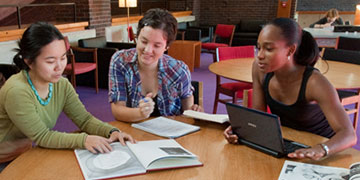Alternative Title
Part of the New Neilson Sustainability Story collection
Publication Date
2020-05-07
Document Type
Class Project
Study Type
ENV 312
Department
Environmental Science and Policy
Advisors
Alex Barron and Dano Weisbord
Abstract
According to the Carbon Leadership Forum, the built environment contributes to almost 40% of CO2 emissions worldwide each year. While much of the greenhouse gas (GHG) emitted from structures is a result of the energy required to operate the lighting, heating, and cooling of existing buildings, it has been calculated that embodied carbon will be responsible for roughly half of the total new construction emissions between now and 2050. At an institutional scale, Smith College has made great progress in improving the energy and structural efficiency of building operations and expanding renewable energy initiatives. However, with construction being responsible for roughly 65% of the institution’s Scope 3 GHG emissions, the next frontier of work is to identify, address, and reduce embodied carbon in buildings by lowering the emissions from material manufacturing and the construction processes. By using the open-access Embodied Carbon in Construction Calculator (EC3) developed by the Carbon Leadership Forum, as well as utilizing the Life Cycle Assessment completed by Thornton Tomasetti, this project calculated an estimate of the emissions associated with the foundational concrete and structural steel used in the construction of Neilson Library. This project has three main products: 1) A detailed identification of two major carbon hotspots and their connection to Smith’s Scope 3 GHG emissions; 2) The calculated embodied carbon associated with two of the most prevalent materials used in the construction of Neilson Library; 3) A brief analysis of potential alternative materials as well as recommendations that could be used to lower the embodied carbon within new construction. By addressing embodied carbon within the capitol construction sector, Smith could both rise as a leader among Higher Education Institutions (HEIs) and make steps towards developing a reduction plan for their Scope-3 GHG emissions.
Rights
©2020 Larissa Holland, Rebecca Miller, Lydia Sheyda
Recommended Citation
Holland, Larissa; Miller, Rebecca; and Sheyda, Lydia, "Exploring Embodied Carbon within Smith College Construction: Utilizing the New Neilson Library as a Case Study" (2020). Class Project, Smith College, Northampton, MA.
https://scholarworks.smith.edu/other_projects/48



Comments
Part of the collection: New Neilson Sustainability Story.